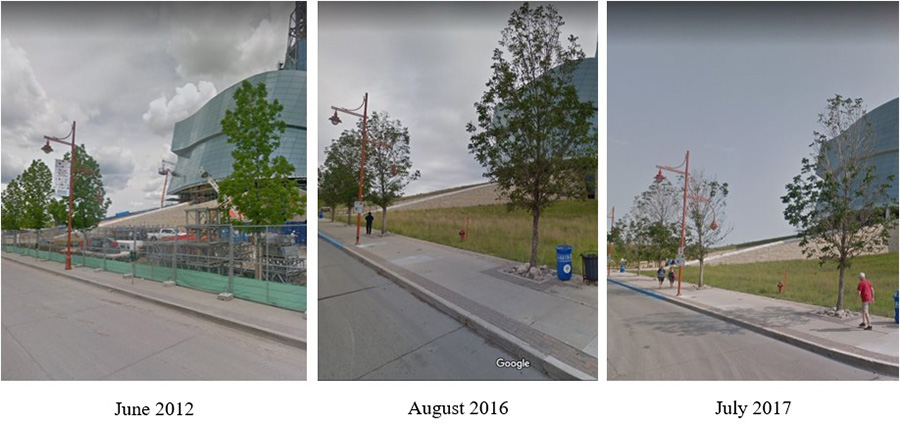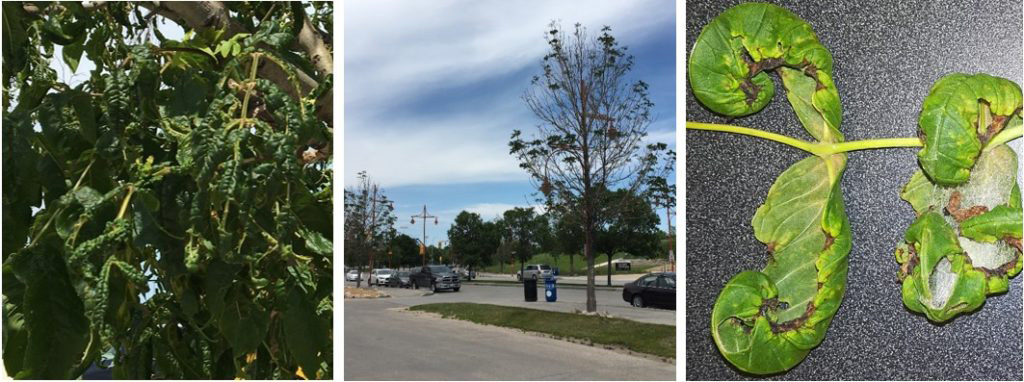About Cottony Ash Psyllid
Cottony Ash Psyllid (CAP), also known as jumping tree lice, is an invasive species. The pest originated in Europe and is found in the United States and Canada. CAP infests black, Manchurian and black-Manchurian hybrid ash trees as well as stressed trees. Once a tree is infested, it may recover, succumb to the pest and die, or become more vulnerable to other pests and illnesses. CAP was confirmed in Winnipeg in 2017 around the Forks area but has spread widely just in varying degrees. About 14,400 black and Manchurian ash trees in Winnipeg could succumb to this pest.

When CAP eggs hatch, the immature insects (nymphs) feed on the leaves — sucking out the sap, which results in curled up leaves and a white cottony substance. The insect is thought to also inject the tree with a toxin that damages tree leaves. The pest thrives in our hot summers and does not seem to be affected by the cold winters.
What to Look for:
- Thinning in the upper portion of the tree;
- Browning, yellowing, and curling along the edge of leaves — indicating a first-generation psyllid population;
- Curled and misshapen leaves;
- A cottony substance found within the curled leaves, indicating a second-generation psyllid population;
- Heavily damaged leaves can have a cauliflower appearance;
- Leaves may drop prematurely.

What to Do:
CAP has no natural predators, and Winnipeg’s ash trees have no resistance to the pest. Neem oil trunk injection and pesticide sprays have no evidence to support the control of the problem. Pesticides have not been proven to effectively manage CAP because the leaves curl up, preventing contact with the insects. Insecticidal soap may work when applied frequently and with precise timing. The time to use the soap mixture is dependent on the life cycle of the pest. You want to apply it at the early nymph life stage, most likely in the first week of June and then again for the second-generation nymph in the first week of July.
The best option for controlling this pest is to try to keep your tree healthy. You can eliminate the stress on your tree through proper watering, pruning, and mulching around your tree. Trees may recover on their own if they are properly cared for, and the infestation is not severe. An ISA Certified Arborist can assess your tree and help create a plan to treat/ manage your ash trees. Find out more information about hiring an ISA Certified Arborist.

